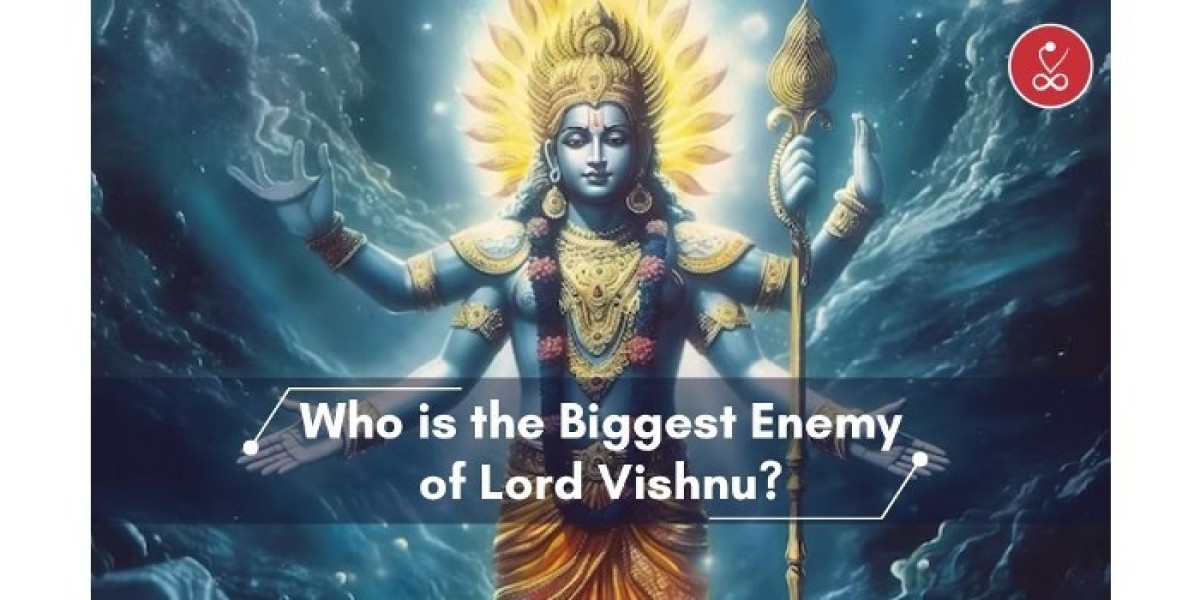Introduction
In the vast tapestry of Hindu mythology, Lord Vishnu stands as the Preserver, maintaining cosmic order and harmony. But even the divine must face adversaries, and Vishnu’s tales are replete with formidable enemies. These enemies not only add depth to the stories but also embody various moral and ethical lessons. So, who is the biggest enemy of Lord Vishnu according to these ancient texts?
Lord Vishnu: The Preserver
Lord Vishnu, one of the principal deities in Hinduism, plays the crucial role of maintaining balance in the universe. Known for his avatars—divine incarnations sent to restore dharma (cosmic order)—Vishnu’s actions are pivotal in mythological lore. From the fish avatar Matsya to the warrior prince Krishna, each avatar addresses specific evils and challenges.
Concept of Enemies in Hindu Mythology
Enemies in Hindu mythology are more than mere antagonists; they are essential for the narrative’s progression. They represent chaos, ego, and the darker aspects of human nature. The confrontation between good (devas) and evil (asuras) underscores the perpetual struggle for righteousness.
Notable Enemies of Lord Vishnu
Several notable figures challenge Lord Vishnu across different stories, each with their unique traits and narratives:
Hiranyakashipu
Hiranyakashipu, the arrogant demon king, is best known for his confrontation with Vishnu’s Narasimha avatar. His story is a classic tale of ego and divine retribution.
Ravana
Ravana, the ten-headed demon king of Lanka, opposes Vishnu’s Rama avatar in the epic Ramayana. His abduction of Sita and subsequent battle with Rama highlight themes of devotion and justice.
Kamsa
Kamsa, the tyrannical king, is a central antagonist in the Krishna narratives. His fear of being overthrown by his sister’s child, Krishna, leads to numerous attempts to kill the divine child.
Shishupala
Shishupala, a jealous king, meets his end at the hands of Krishna. His story emphasizes the consequences of unchecked jealousy and disrespect for divinity.
Who is the Biggest Enemy of Lord Vishnu?
Determining Vishnu’s biggest enemy involves examining the magnitude and impact of each foe. While each enemy posed significant challenges, one stands out for his sheer audacity and the divine response he elicited.
Hiranyakashipu: The Arrogant Demon King
Hiranyakashipu’s story is one of the most dramatic in Hindu mythology. Seeking revenge for his brother’s death, he gains immense powers and demands worship as a god. His conflict with his son Prahlada, a devout Vishnu follower, culminates in Narasimha—Vishnu’s half-man, half-lion avatar—bursting forth to annihilate him. This tale underscores the perils of excessive pride and the inevitability of divine justice.
Ravana: The Ten-Headed Demon King
Ravana’s multifaceted persona and intellectual prowess make him a compelling antagonist. His abduction of Sita and the subsequent war with Rama, an avatar of Vishnu, are pivotal in the Ramayana. Ravana’s ten heads symbolize his vast knowledge and uncontrolled desires, highlighting the moral that even the most powerful beings are not invincible against dharma.
Kamsa: The Tyrant King
Kamsa’s reign of terror and his fear of Krishna’s prophesied death at his hands set the stage for numerous attempts on Krishna’s life. Despite his cruelty, Kamsa’s story is also one of redemption and fate. Krishna’s eventual triumph over Kamsa symbolizes the victory of divine will over tyranny.
Shishupala: The Jealous King
Shishupala’s relentless jealousy and repeated insults towards Krishna culminate in his death at the latter’s hands. This story illustrates the destructive power of envy and the importance of respecting divinity.
Comparing Vishnu's Enemies
While each enemy brought unique challenges, Hiranyakashipu’s confrontation with Vishnu’s Narasimha avatar stands out for its intensity and the dramatic divine intervention it necessitated. His story’s symbolism and the sheer force of his arrogance make him a significant contender for Vishnu’s biggest enemy.
When will Kalki Avatar born on Earth
Is Hanuman still alive in Kalyuga
The Symbolic Interpretation of Enemies
Each enemy of Vishnu represents different human vices: Hiranyakashipu’s arrogance, Ravana’s uncontrolled desires, Kamsa’s tyranny, and Shishupala’s jealousy. These stories teach profound moral lessons and underscore the importance of virtues like humility, justice, and devotion.
Conclusion
While all of Vishnu’s enemies played crucial roles in the mythological narratives, Hiranyakashipu emerged as the most significant due to the dramatic nature of his downfall and the profound lessons his story imparts. These tales continue to resonate, offering timeless insights into the human condition and the eternal struggle between good and evil.
FAQs
Who was the most powerful enemy of Lord Vishnu?
Hiranyakashipu is often considered the most powerful due to his near-invincibility and the dramatic intervention of the Narasimha avatar.
Why did Lord Vishnu have so many enemies?
As the Preserver, Vishnu’s role is to maintain cosmic balance, which often brings him into conflict with forces of chaos and adharma.
What lessons do Vishnu’s battles teach us?
Vishnu’s battles teach us about the importance of dharma, humility, and the inevitable triumph of good over evil.
How did Lord Vishnu defeat his enemies?
Vishnu often uses his avatars to defeat his enemies, each tailored to address specific evils and restore cosmic order.
Are there modern interpretations of Vishnu’s enemies?
Yes, modern interpretations often view these enemies as symbolic representations of human vices, providing moral and ethical lessons relevant to contemporary life.









